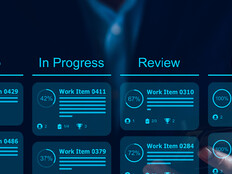Cybersecurity Concerns Rose as More People Connected from Home
The transition was not without its challenges, of course. Agencies needed to rapidly scale up their solutions to accommodate the explosion in demand. While some employees were already familiar with remote collaboration tools, others were using them for the first time, and that required widespread training. Some employees struggled with basic connectivity issues as their home internet service providers were bombarded by overwhelming demand.
Cybersecurity was a top concern with so many people accessing sensitive data and systems remotely for the first time. Many agencies were able to use existing tools, including multifactor authentication, cloud resources and VPN connections. Still, agencies stepped up their training on phishing and other types of attacks, and IT leaders carefully evaluated which workflows could and could not be supported remotely.
“Anything done on the unclassified environment, by its nature, is not secure,” says Jack Gumtow, CIO for the Defense Intelligence Agency. “My goal has been to implement capabilities that provide a level of security that is commensurate with the level of work being conducted. Does that mean it is impenetrable? No, it doesn’t. What it means is that we have and are implementing tools, monitoring activities and educating our workforce on the risks and how to operate within that environment.”
Golley, Gumtow, Noga and IT leaders at four other agencies sat down with FedTech — remotely, of course — for in-depth Q&A sessions about their experience navigating the coronavirus crisis. The result: a series of candid, illuminating discussions about how agencies responded to the crisis as it unfolded, the impact of remote work on their operations and how lessons learned from the experience are likely to reverberate into the future.
We’ll be posting two Q&As each week. Sign up to join FedTech Insiders today and hear what they have to say.
- Read our Q&A with National Science Foundation CIO Dorothy Aronson.
- Read our Q&A with Defense Intelligence Agency CIO Jack Gumtow.
- Read our Q&A with Farm Credit Administration CIO Jerry Golley.
- Read our Q&A with Environmental Protection Agency CIO Vaughn Noga.
- Read our Q&A with U.S. Customs and Border Protection Enterprise Data Management and Engineering Directorate Executive Director Edward Mays.
- Read our Q&A with Securities and Exchange Commission CIO David Bottom.
- Read our Q&A with Department of Veterans Affairs CIO James Gfrerer.











